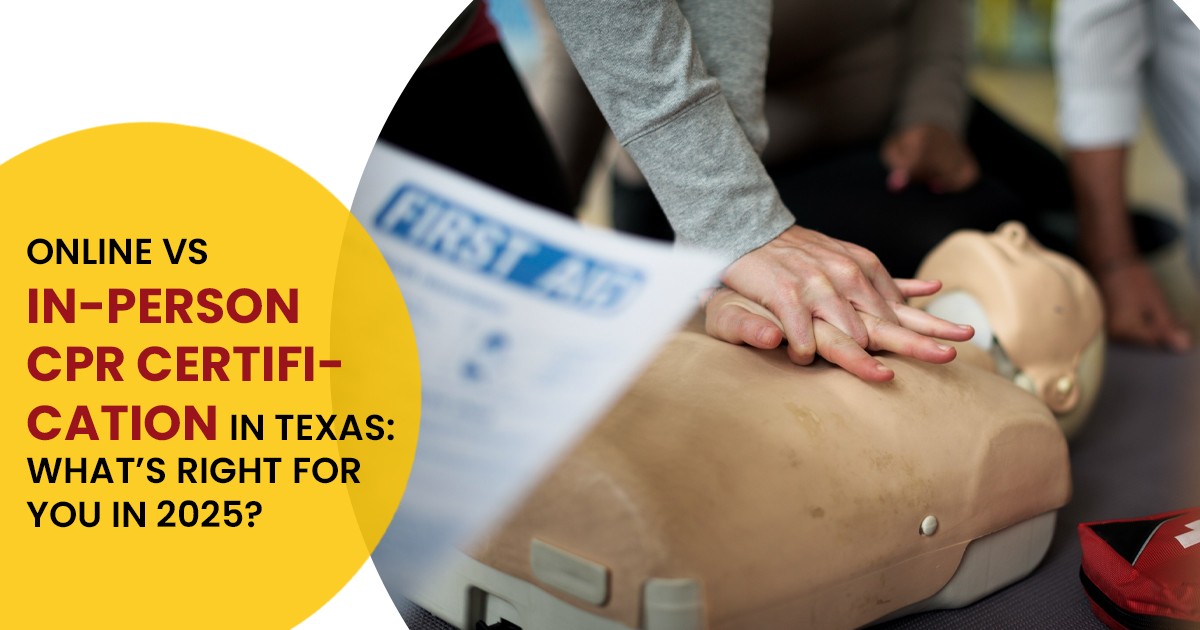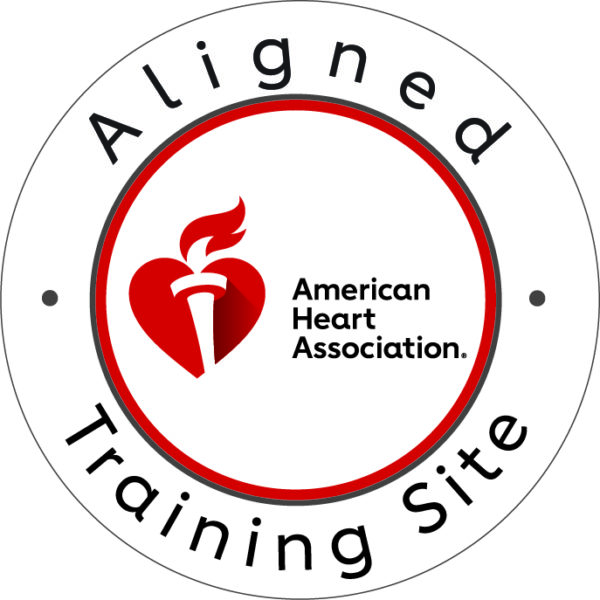Texas Onsite CPR Blog | Return to Blog Index
Online vs In-Person CPR Certification in Texas: What’s Right for You in 2025?
August 11, 2025

Choosing the right training format for CPR certification in Texas is no longer a one-size-fits-all decision. With advancements in training technology and evolving workplace requirements, both online and in-person courses now offer unique advantages. The challenge for many Texans in 2025 is determining which option best fits their schedule, learning style, and professional needs.
At Texas OnSite CPR, we deliver both formats with the same commitment to accuracy, compliance, and real-world readiness. Let’s explore the key differences, plus a few insider tips, to help you choose the right path.
Online vs In-Person CPR Certification in Texas
1. Learning Experience: Screen vs. Simulation
Online CPR courses offer flexibility, perfect for busy professionals balancing unpredictable schedules. You can pause, review modules, and learn at your own pace. However, these courses can’t fully replicate the tactile feedback of chest compressions or rescue breathing.
In-person training provides hands-on practice with manikins and automated external defibrillators (AEDs). You also get immediate feedback from certified instructors, which can be critical for mastering correct compression depth and rate.
2. Texas-Specific Compliance Requirements
Certain employers, especially in healthcare, childcare, and public safety, still require in-person skill evaluations for compliance with Texas regulations. While online theory components are widely accepted, hands-on verification is often mandatory for full certification.
Texas OnSite CPR stays current with state guidelines, ensuring that whether you choose online or in-person, you’ll meet all official and industry-specific requirements.
3. Response Confidence in Real Emergencies
The truth is, CPR isn’t just about knowing the steps; it’s about being able to act under pressure. Online learning can teach the “what” and “why,” but in-person training drills the “how” until it becomes second nature.
That said, hybrid models, where you complete theory online and skills in person, are becoming a popular choice for professionals seeking the best of both worlds.
4. Accessibility and Location Advantages
If you live in a rural area, online CPR courses remove the need for long commutes. However, for those in metro areas like Dallas, in-person classes are widely available, often with same-week scheduling.
Texas OnSite CPR provides CPR certification in Dallas with mobile training options, meaning our instructors can come to your workplace, school, or organization.
5. Cost Considerations in 2025
Online-only courses often cost less, but savings may be offset if you later need to schedule an in-person skills test. In-person classes typically include all components, hands-on practice, equipment use, and final evaluation in one package.
At Texas OnSite CPR, we offer competitive pricing without cutting corners on training quality or compliance.
6. Career and Industry Needs
Your choice should align with your professional role. Medical staff, lifeguards, and law enforcement officers almost always need in-person verification. Meanwhile, corporate employees seeking workplace readiness training may benefit from online formats supplemented by periodic live refreshers.
Read Also: Master CPR in Minutes: Simple Steps to Save a Life
Final Recommendation
In 2025, the “right” choice often depends on blending formats for efficiency and effectiveness. Online courses deliver flexibility; in-person training ensures confidence and compliance. Texas OnSite CPR makes both options accessible, fully compliant, and tailored to your needs.
Whether you need the speed of online learning or the assurance of hands-on training, we’ll help you earn your certification without compromise.
FAQs
- Can I get a full CPR certification entirely online in Texas?
Some roles allow full online certification, but most healthcare and safety-related jobs require an in-person skills check.
- How long does CPR certification last?
Typically, certifications are valid for two years, after which you must renew.
- Is online CPR training accepted by all employers?
Not always. Acceptance depends on industry standards and Texas-specific regulations.
- Do you offer group CPR training in Dallas?
Yes. Texas OnSite CPR offers group sessions and on-location classes for organizations seeking CPR certification in Dallas.
- What makes Texas OnSite CPR different from other providers?
We combine compliance expertise, flexible delivery options, and experienced instructors who bring real-world emergency experience to every session.
Ready to get certified? Contact Texas OnSite CPR today to schedule your CPR certification in Texas, online, in-person, or both. Your training. Your schedule. Your safety.
Texas Onsite CPR Blog - Return to Blog Index





 FORT WORTH
FORT WORTH